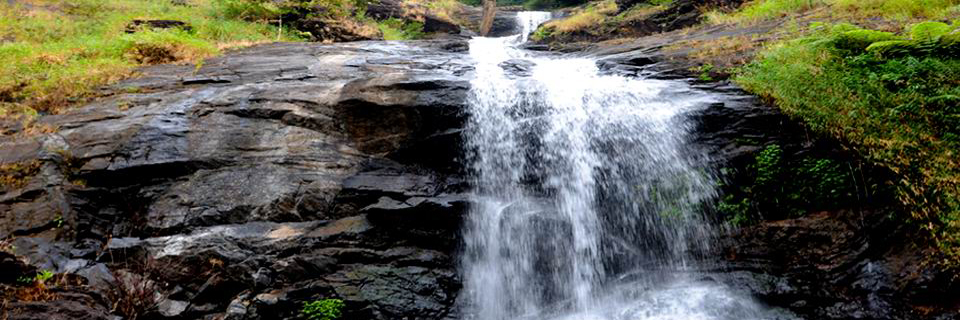Kailpodhu
Kailpodhu is celebrated on the 3rd of September. That is, on the 18th day after the sun enters the Simha (Leo) Raasi. Kail means weapon or armory, and Pold means festival. The day signifies the completion of "nati" - meaning the transplantation of the rice (paddy) crop.
Normally, during the months in which the family is engaged in the fields, all weapons are deposited in the "Kanni Kombare" or the prayer room. The festival also signifies the day that men should prepare to guard their crop from wild boars and other animals.
Hence, on the Kailpoldu day, the weapons are taken out of the Pooja room, cleaned and decorated with flowers. They are then kept in the "Nellakki Nadubade" - central hall of the house, the place of community worship. Each member of the family has a bath and then they worship the weapons. Feasting and drinking follow. The eldest member of the family hands over a gun to the senior member of the family, signifying the commencement of the festivities. The whole family assembles in the "Mand" (open ground), where physical contests and sports, including shooting, are conducted. In the earlier days hunting and cooking of the wild animals was part of the celebration, but these days the shooting skills are tested by firing at a coconut tied on to the branch of a tall tree.
In the earlier days, there were sports like grabbing a coconut from the hands of a group of 8-10 people (thenge porata), throwing a stone about the size of a cricket ball at a coconut from a distance of 10-15 paces (thenge eed), lifting a stone ball of about 30-40cm lying at one's feet and throwing it backwards over the shoulders, etc. These sports are now conducted in community groups called Kodava Samajas in towns and cities.
|
Kaveri Sankramana

|
This festival normally takes place in mid-October. It is associated with the river Kaveri, which flows through the district from its source at Talakaveri.
At a predetermined time, when the sun enters Tula Rasi (Tula sankramana,) a fountain from a small tank fills the bigger holy tank at Talakaveri. People throng in thousands to take a dip in this holy water. The water is collected in bottles and reaches every house in Kodagu, and this is called Theertha - holy water. This water is preserved in all Kodava houses, and a spoonful of this water is fed to the dying, in the belief that they will attain moksha (emancipation) and gain entry to heaven.
On this day, married women wearing new silk saris perform puja to a vegetable, usually a cucumber or a coconut, wrapped in a piece of red silk cloth and decorated with flowers and jewels, mainly 'Pathak' (Kodava Mangalasuthra), symbolizing the goddess Kaveri. This is called the Kanni Puje.
Kanni means the goddess Parvati, who incarnated as Kaveri. Three sets of betel leaves and areca nut are kept in front of the goddess, with bunches of glass bangles. All the members of the family pray to the goddess by throwing rice and prostrating before the image. The elder members of the family ceremonially bless the younger. Then an older married woman draws water from the well and starts cooking. The menu of the day is dosa and vegetable curry ( usually pumpkin curry (kumbala kari) ) and payasa. Non-vegetarian food is not cooked on that day. This is the only festival wherein non-vegetarian food is not prepared.
|
Puttari
Puttari means new rice, and is the rice harvest festival (also called huttari in adjacent Kannada-speaking country). This takes place in late November or early December. Celebrations and preparations for this festival start a week in advance.
On the Puttari day, the whole family assemble in their ain mane (the common family house) which is decorated with flowers and green mango and banana leaves. Specific foods are prepared: thambuttu, puttari, kari, and poli poli. Then the eldest member of the family hands a sickle to the head of the family, and one of the women leads a procession to the paddy fields, with a lit lamp in her hands. The path leading to the field is decorated.
A gunshot is fired to mark the beginning of the harvest, with chanting of "Poli Poli Deva" (prosperity) by all the people present there. Then the symbolic harvesting of the crop begins. The rice is cut and stacked and tied in odd numbers, and is then carried home, to be offered to the gods there. The younger people then burst firecrackers and revel, symbolizing prosperity. Groups of youngsters then visit the neighboring houses and show off their dancing skills, and are given monetary gifts. A week later, this money is pooled and a community dinner of the entire village is celebrated.
All the family members gather for this meal. Dinner normally consists of meat dishes such as pork and fish curry. Alcoholic beverages are also served at such feasts.
|
 |
|






